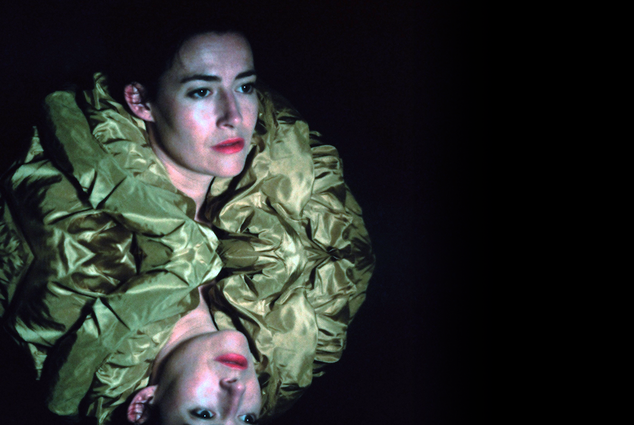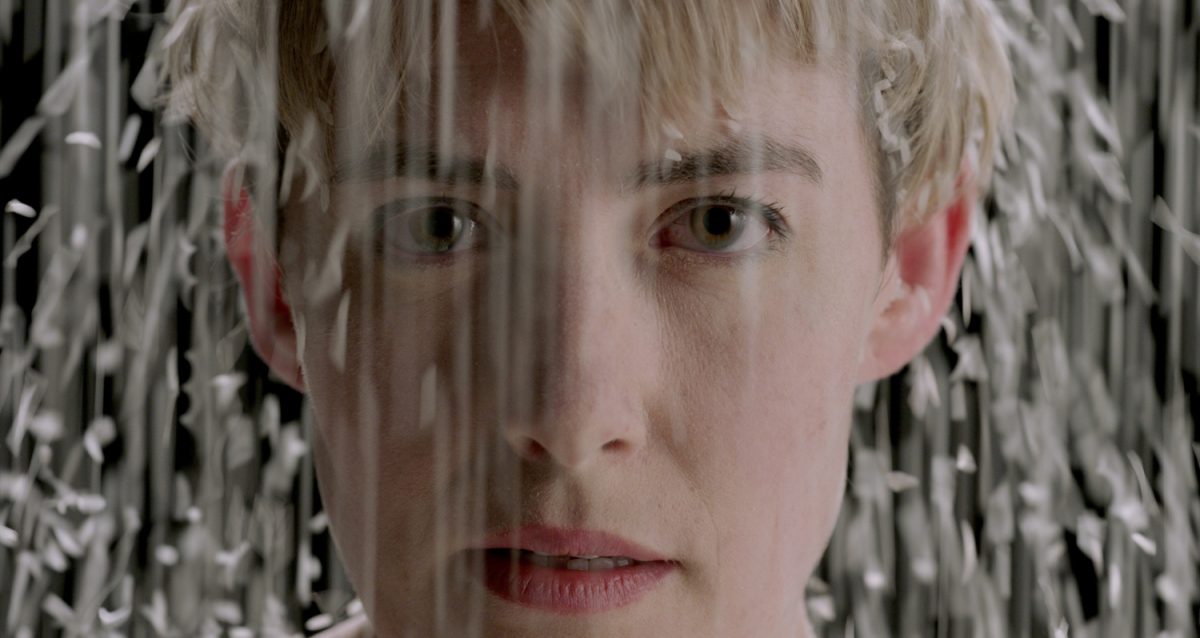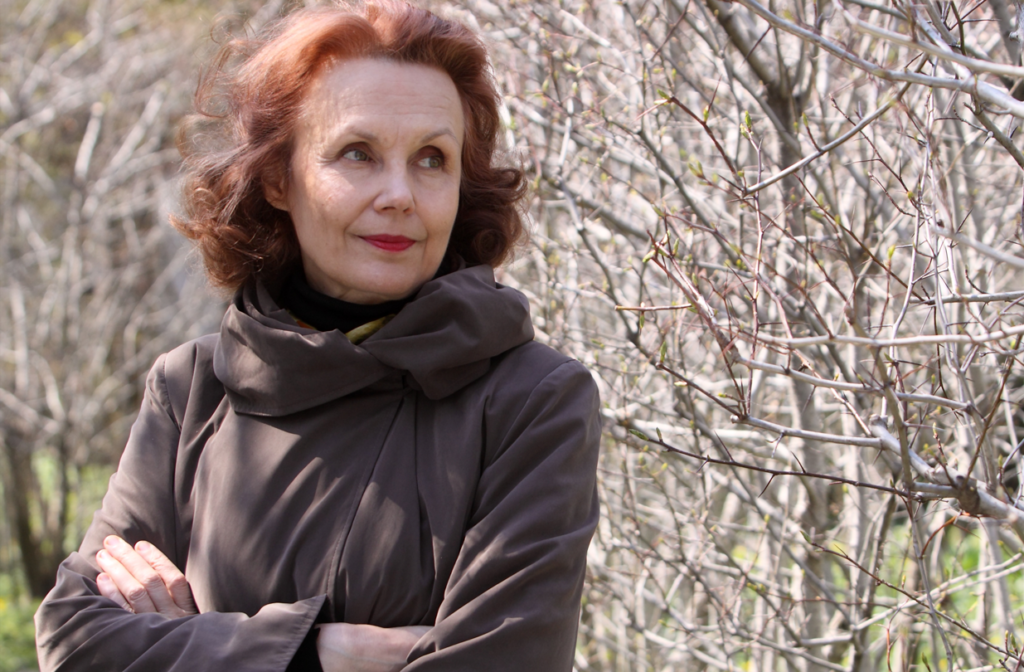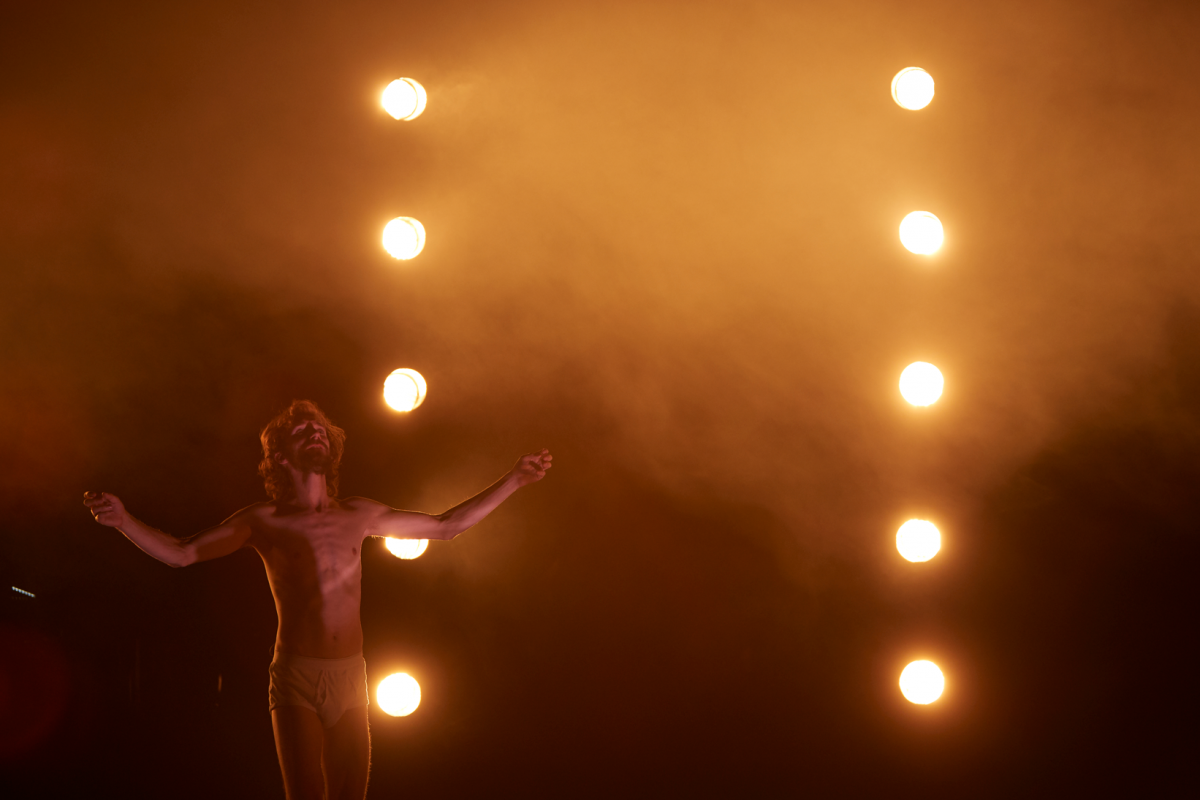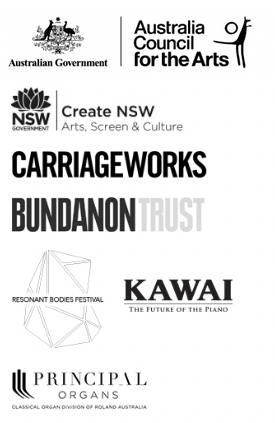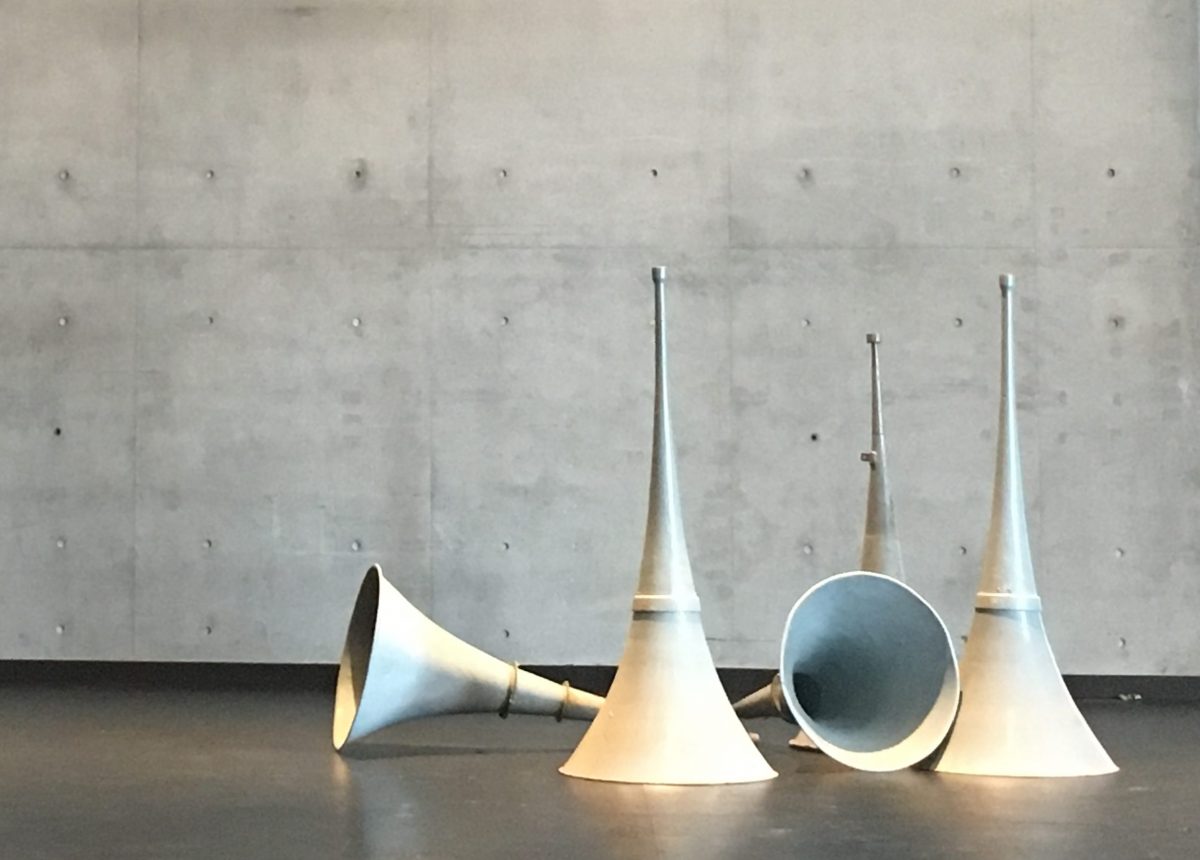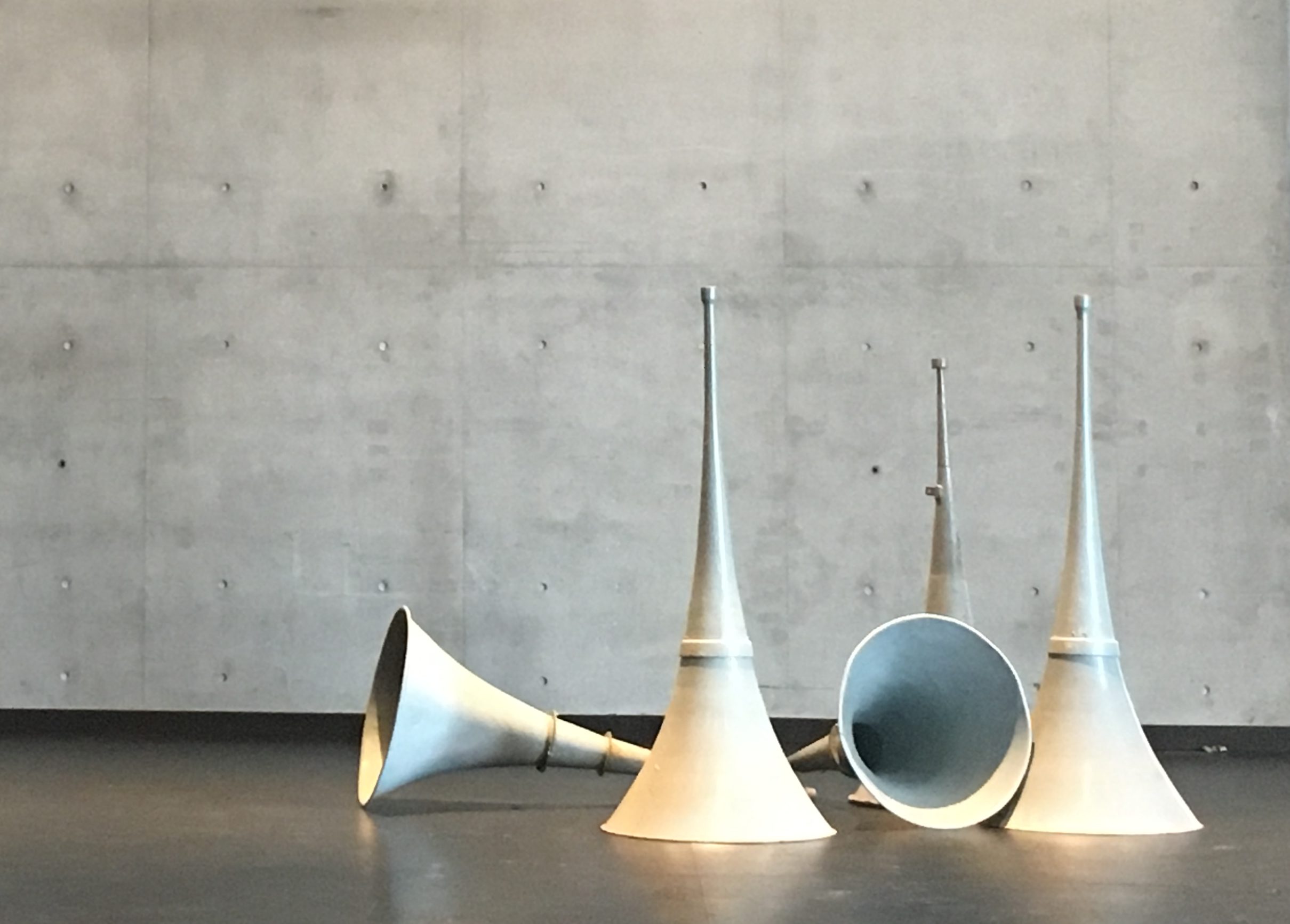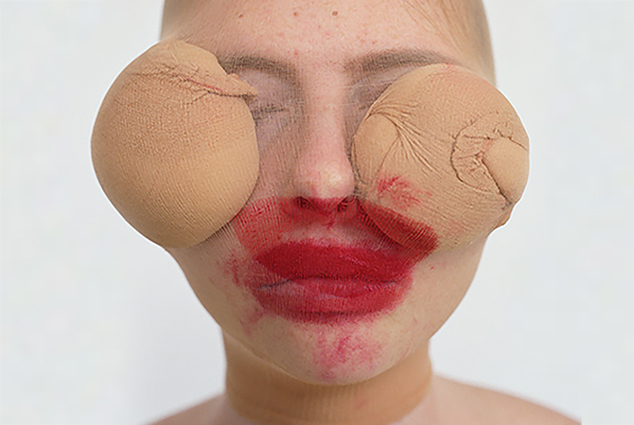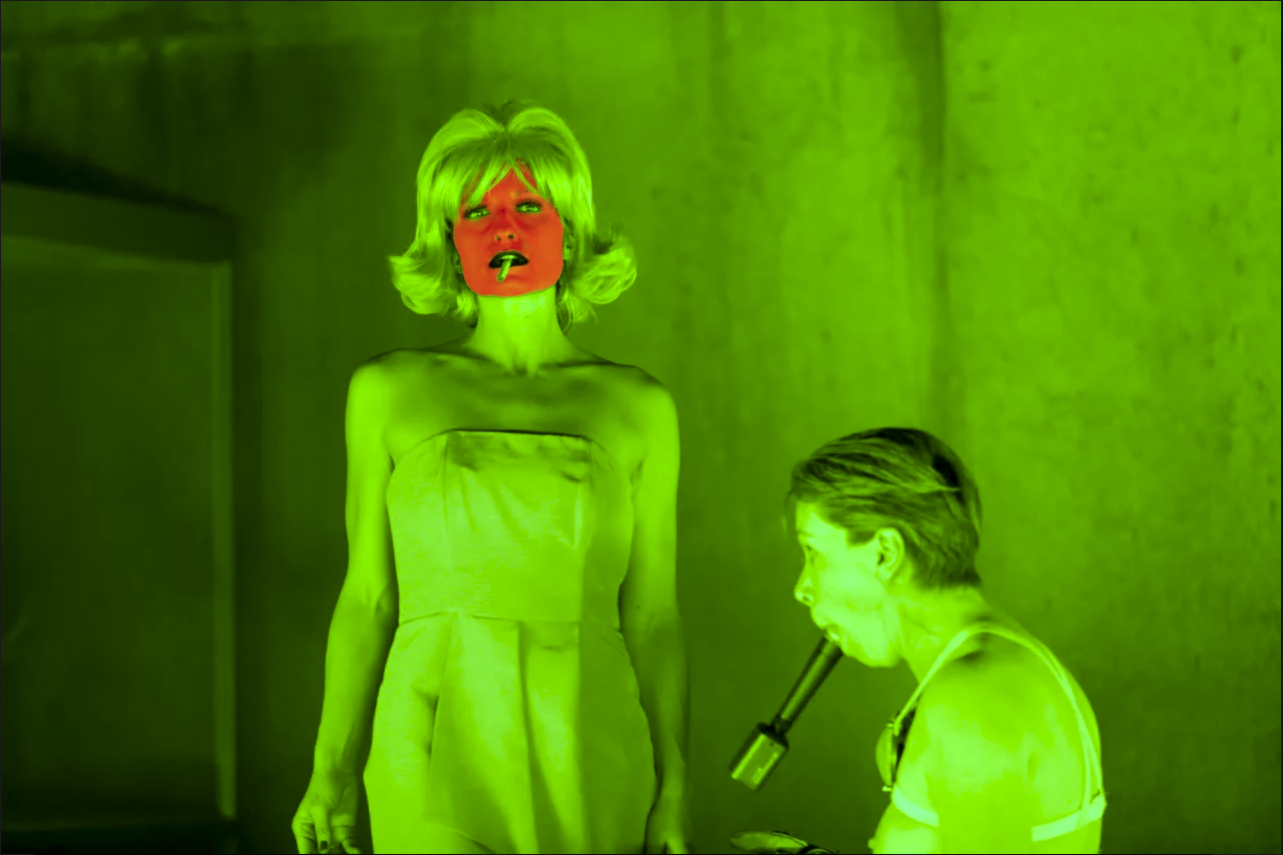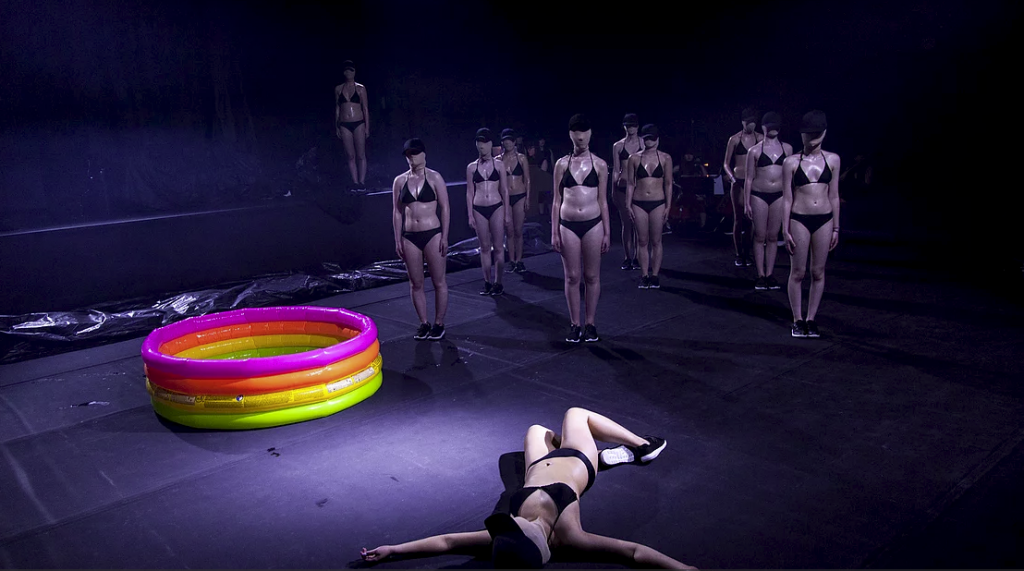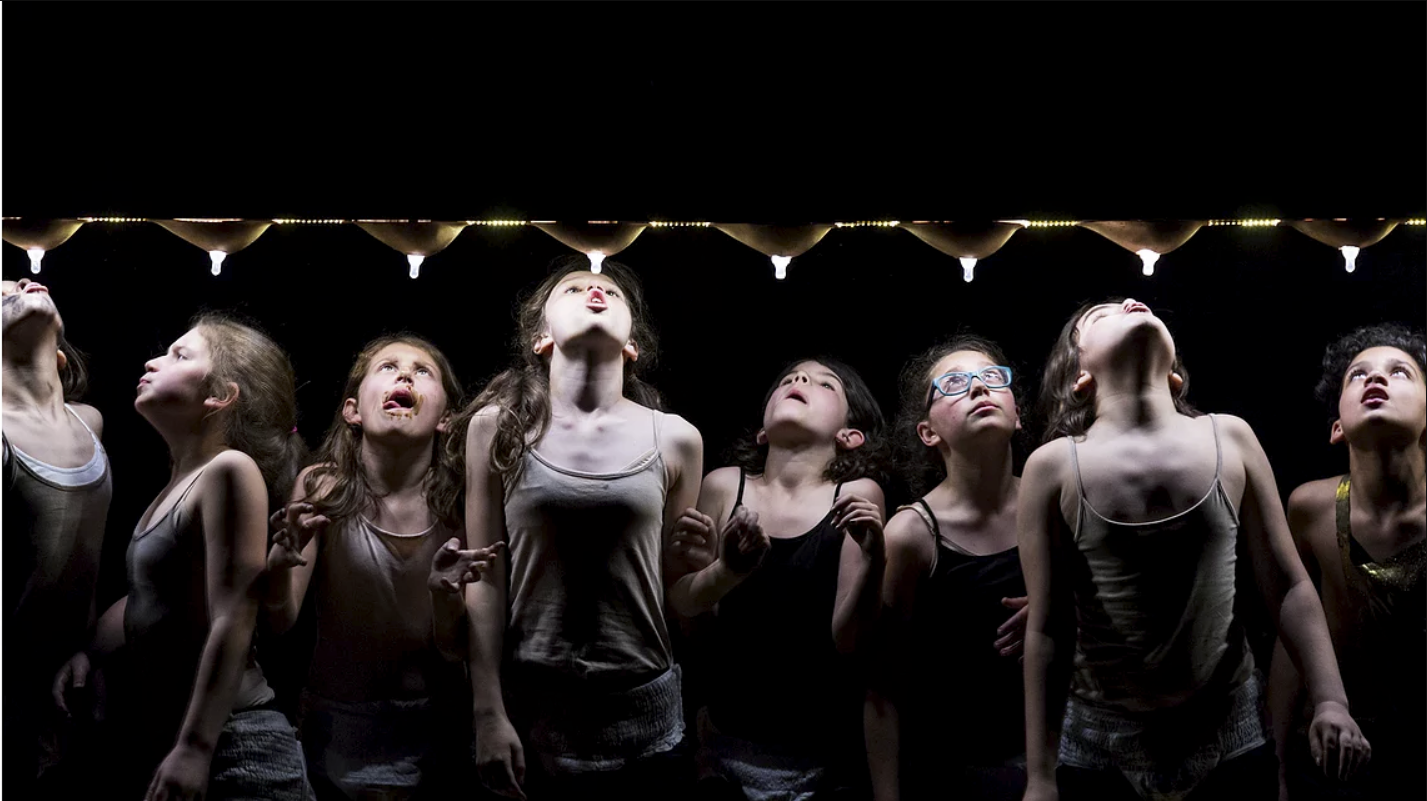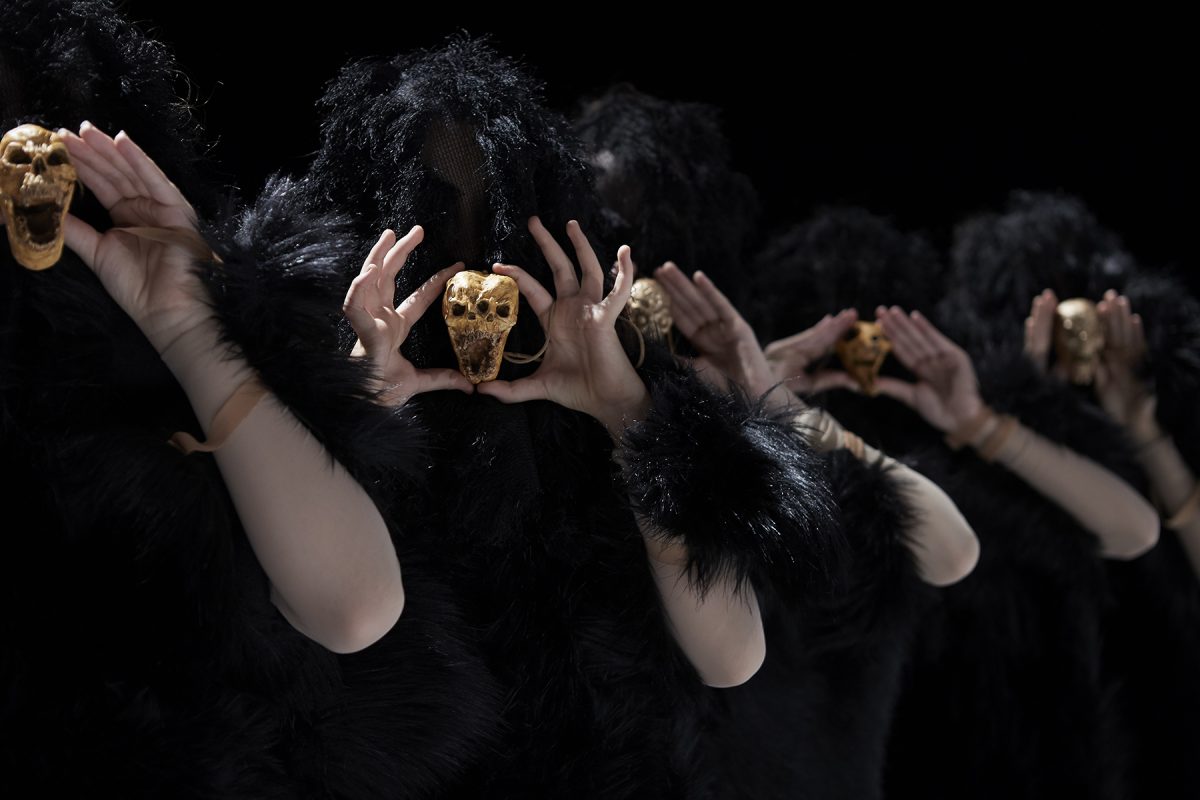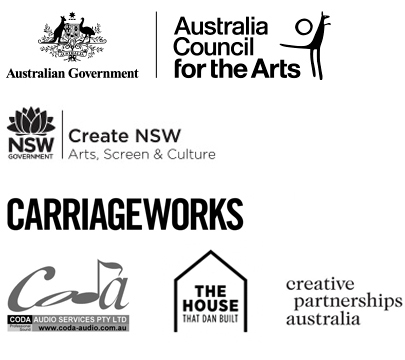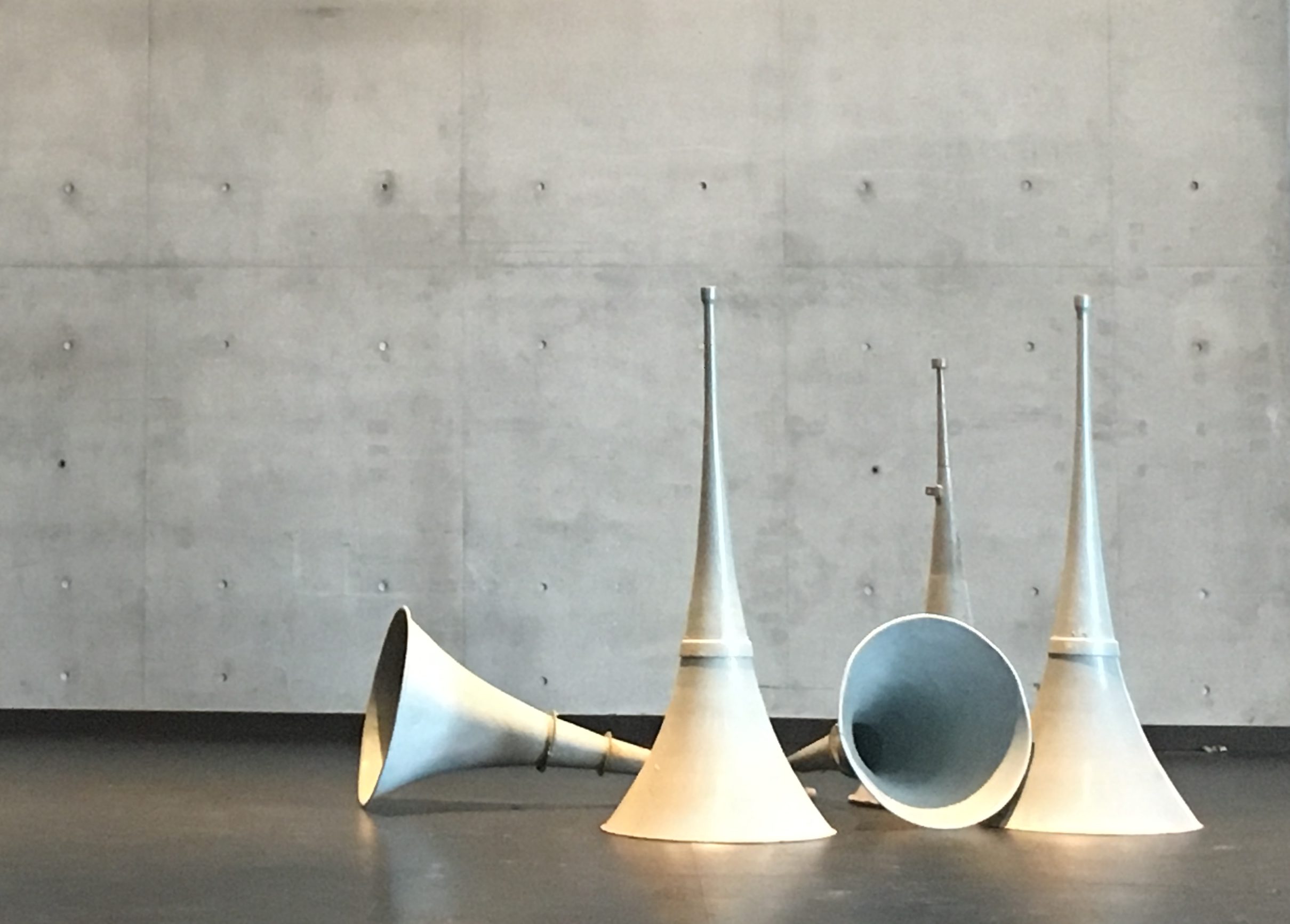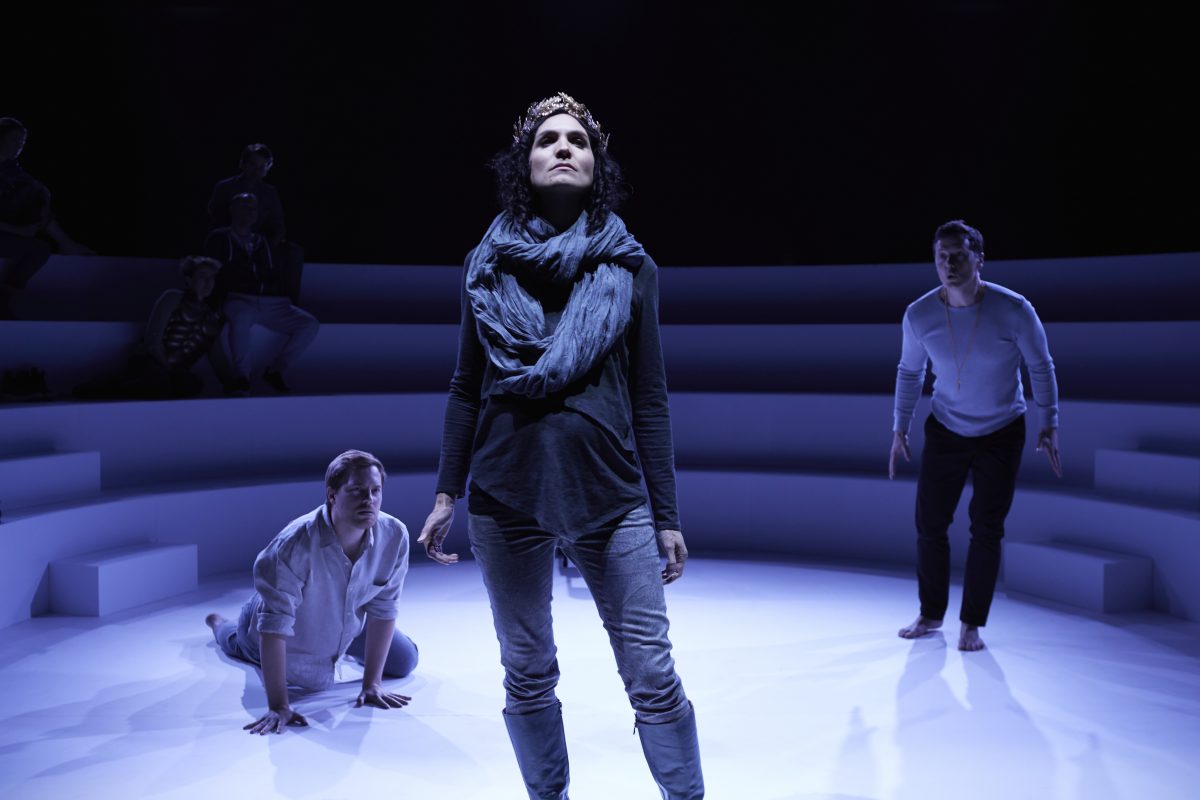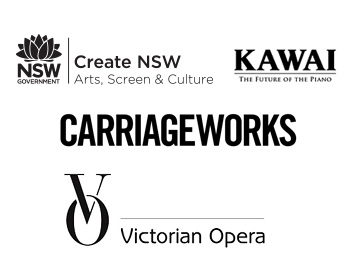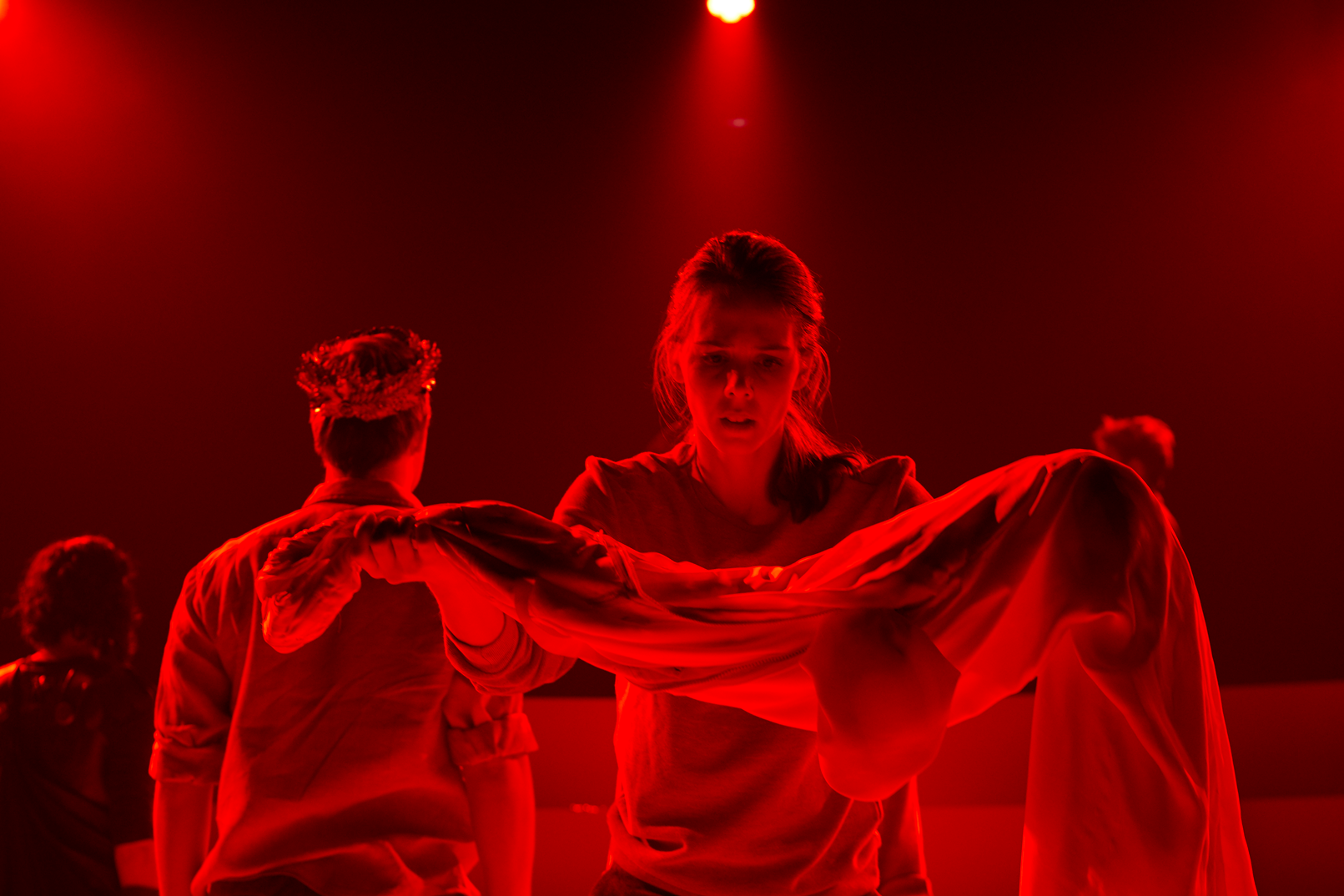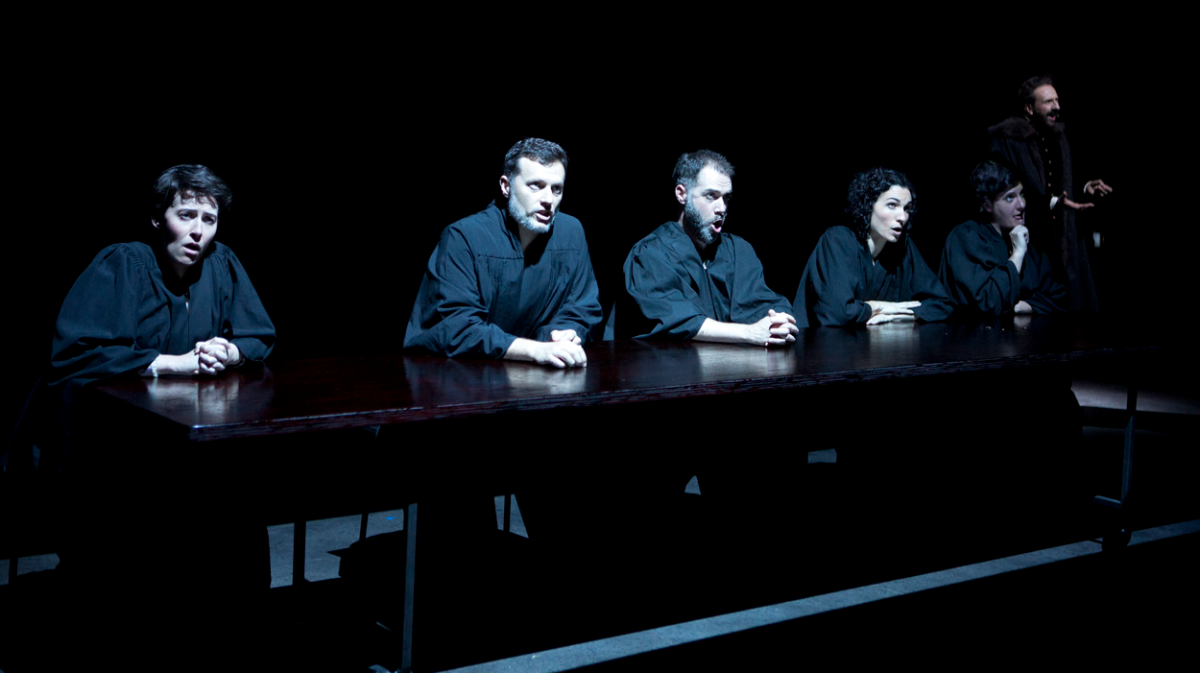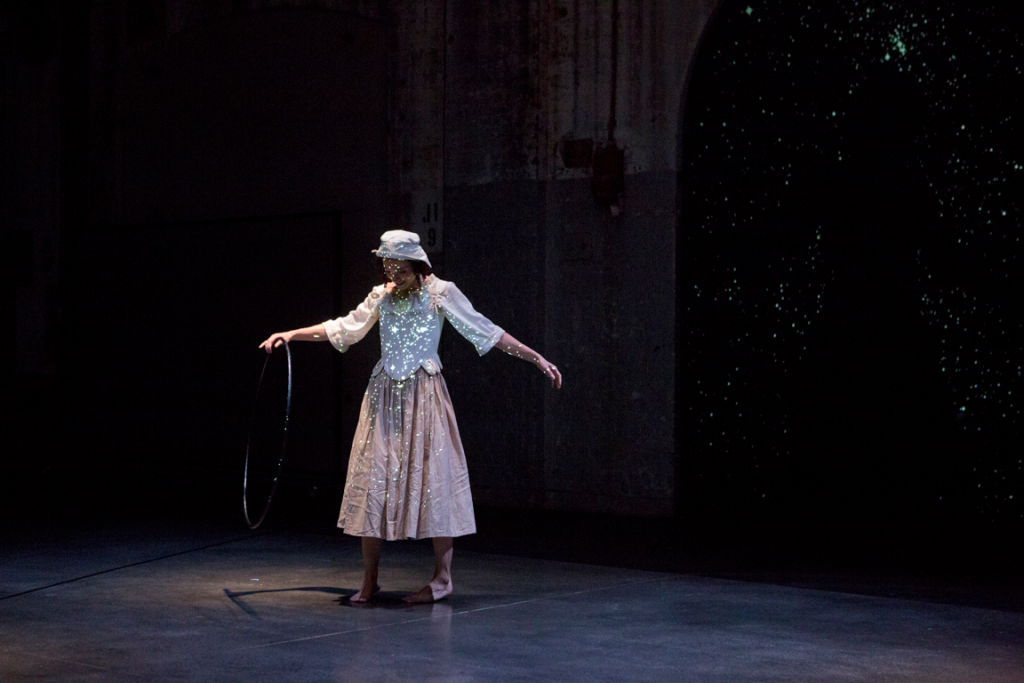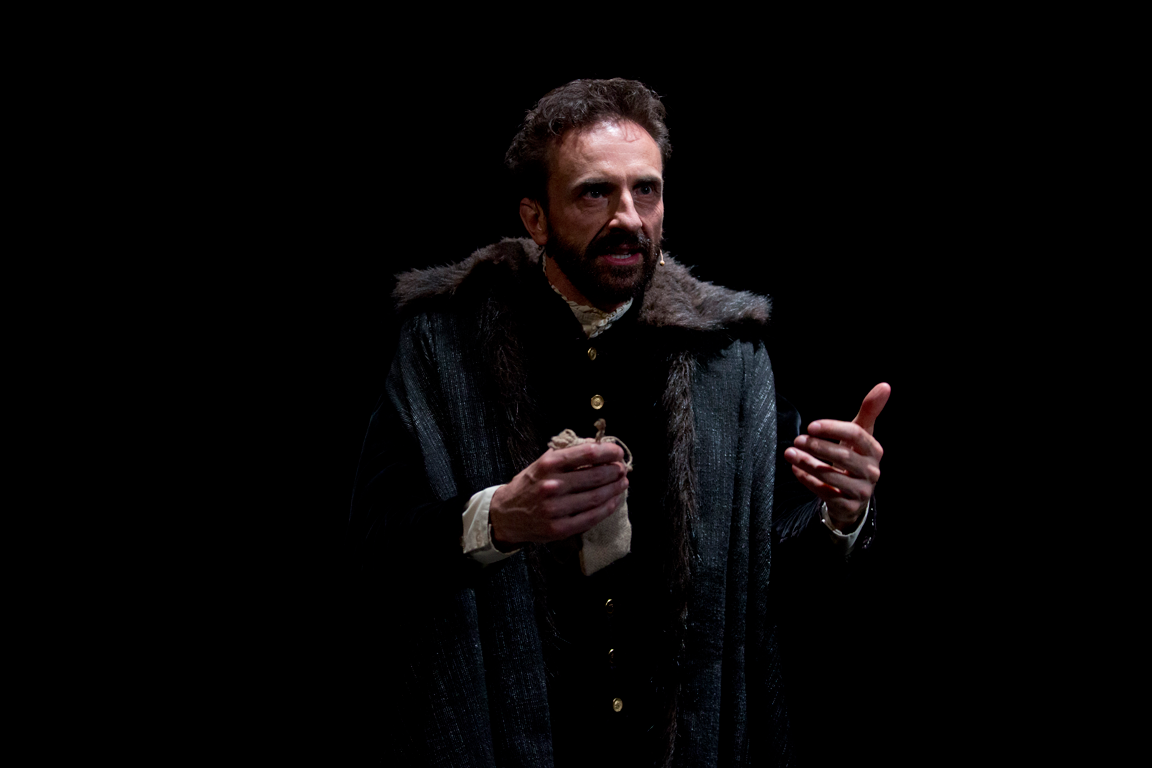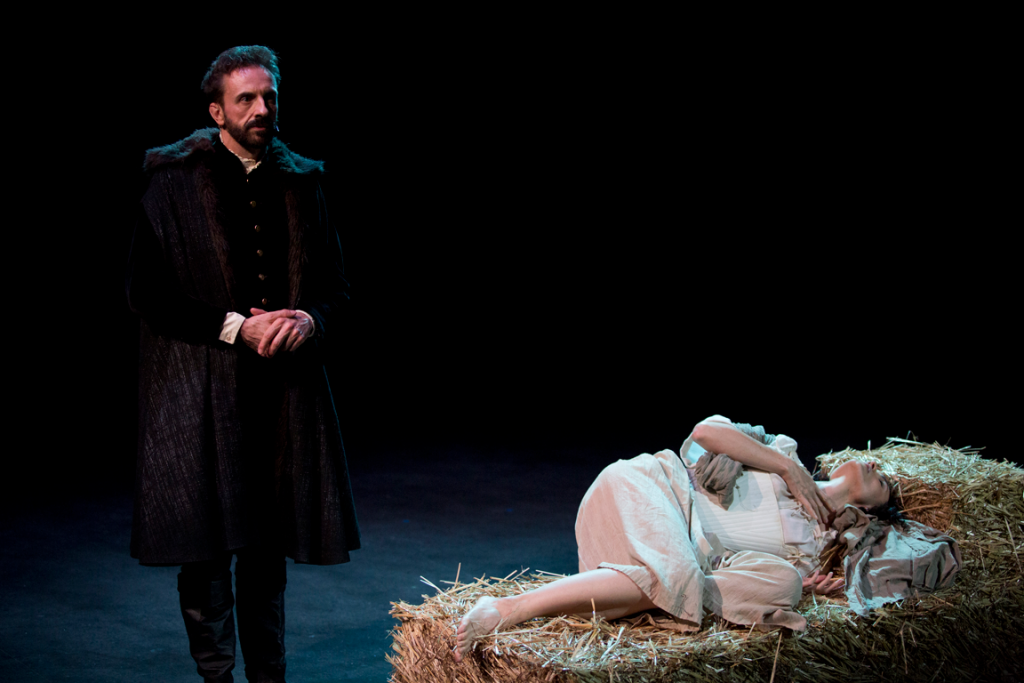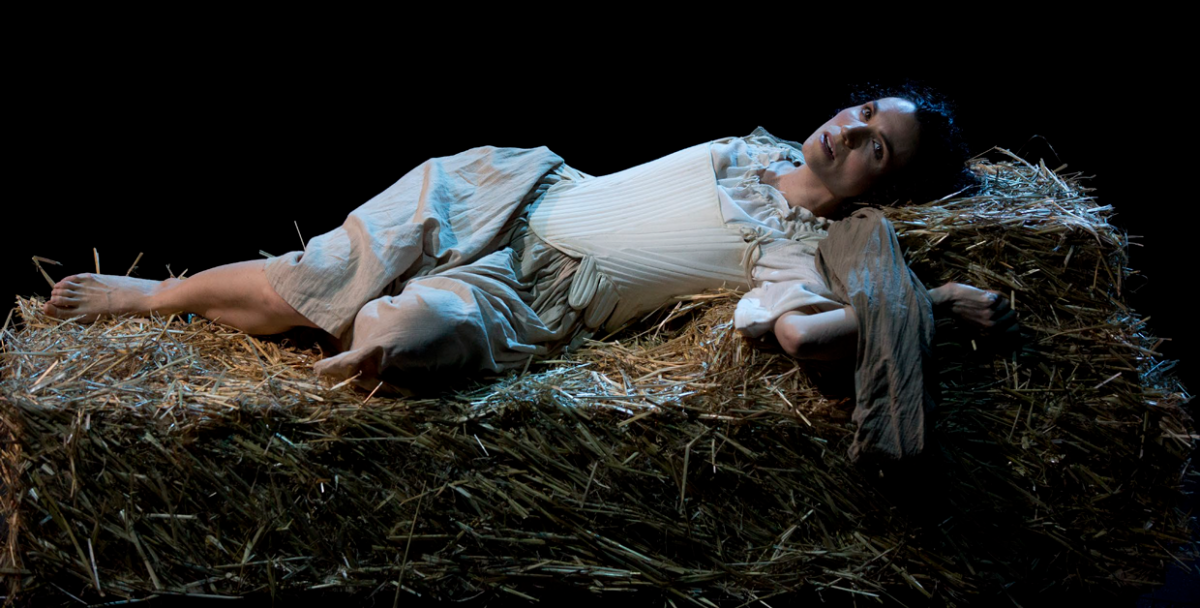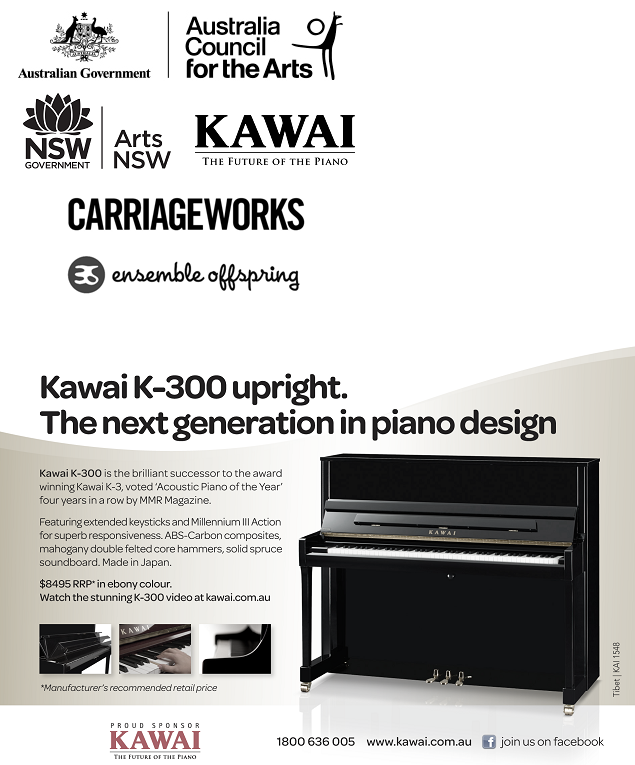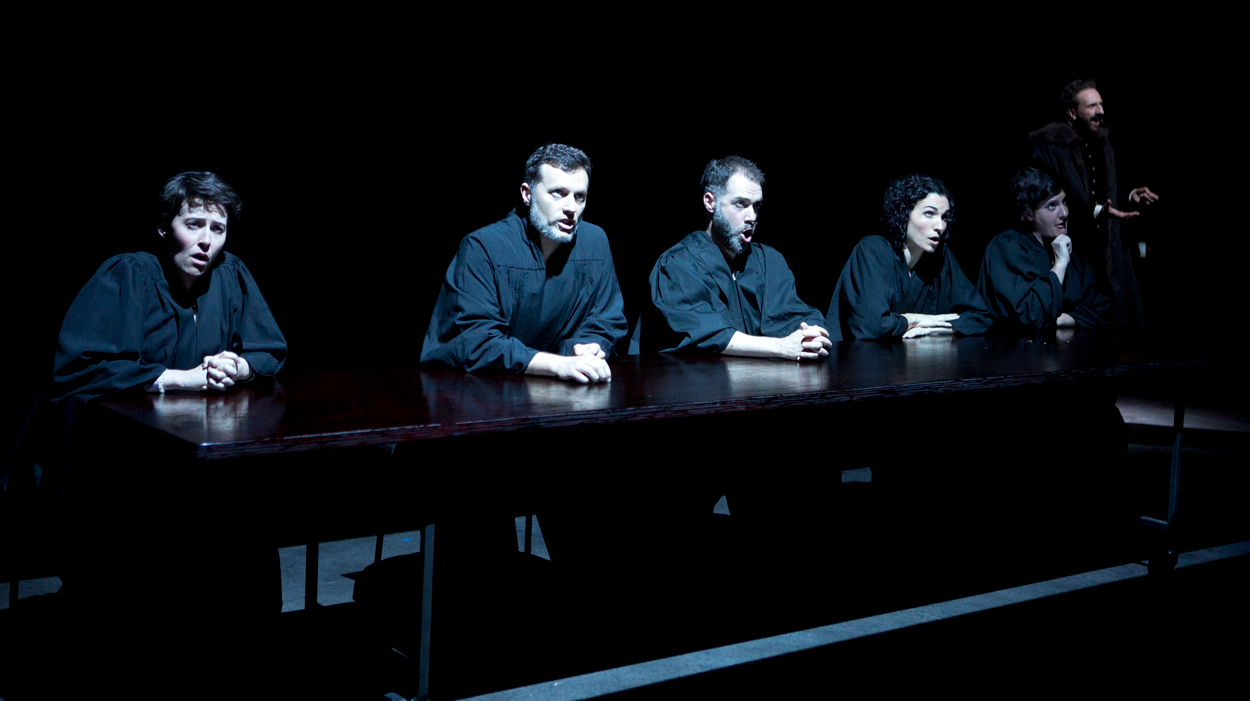A PASSION FOR TRANSCENDENCE
Creatives find their concept for La Passion de Simone
by Annarosa Berman
The idea for the form of La Passion de Simone, a work for solo soprano, chorus and ensemble based on the life of the philosopher Simone Weil, came from the passion play tradition according to composer Kaija Saariaho. Yet when the director for Sydney Chamber Opera’s new production for Sydney Festival, Imara Savage, and designer, Elizabeth Gadsby, began to explore Saariaho’s score and Amin Maalouf’s libretto, they were initially confused.
Says Savage: “The different sections are labelled as Stations, so as a theatre maker you think, okay, this is a passion play – there are discreet episodes that lead to the main character’s death. Except that the music does not necessarily reflect such episodic stations- it is much more subtly structured and complex.” Maalouf’s libretto did not fit the passion play mould in any obvious way either – as Savage puts it: “How do you stage somebody’s thoughts changing?”
Savage and Gadsby, who in the early, conceptual stages of a production think of themselves as co-directing, approached SCO artistic director and conductor of the production Jack Symonds for help. “Can you tell us what the music is doing, and why? ” they asked. Symonds responded with an essay explaining, among other things, how Saariaho’s score can be thought of as operating like sonic waves that sometimes build to what could be perceived as a climax, yet are never resolved.
“Elizabeth and I both connected with Weil’s view that you gain knowledge through endurance and suffering,” Savage says. “If you walk into suffering rather than pulling away from it, you transcend it to a place of spirituality, where death is not the end. When we started thinking about Weil’s life in these terms, it became easier, because the music strongly reflects it.”
In keeping with this insight, Gadsby began to grasp the drama of the music when she realised that it was constantly moving from one thing to the next, like particles in space. “It’s not dramatic in the sense that it builds up and then settles – it never settles. It goes towards something and then shifts and moves somewhere else. Therein lies the drama.”
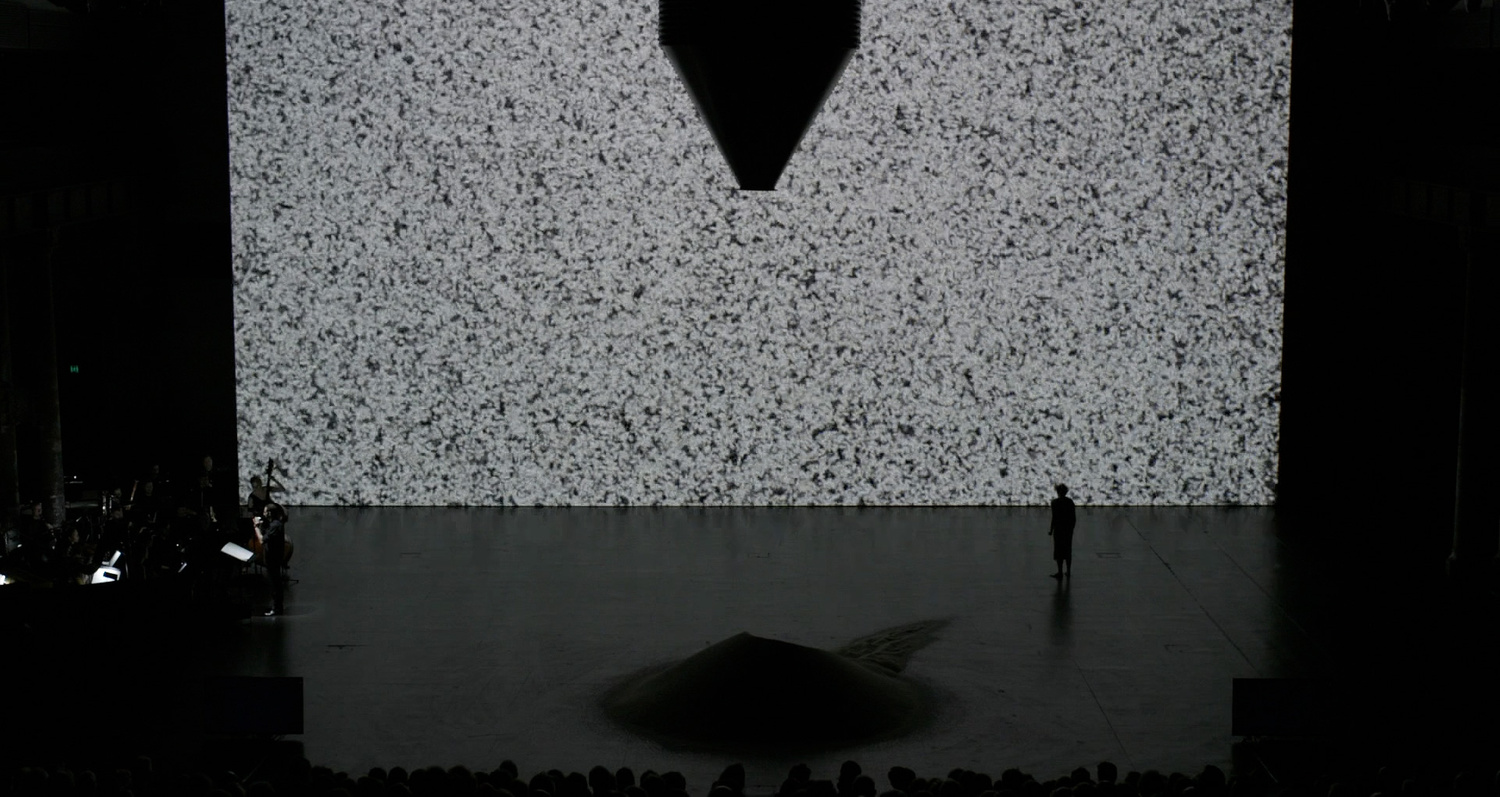
What sustains the narrative is Weil being in a constant state of endurance, with the assurance that if she endures long enough, there will be some kind of knowledge gained. Savage says: “La Passion de Simone is a meditation on suffering. It asks you to contemplate what it means to step into suffering, like Weil did. She gave away all her worldly possessions and rationed her food in accordance with what people could eat in wartime France, for example. She suffered so that she could empathise with others who suffered.”
Gadsby likens this “constant state of endurance” to the experience of picking up a stone and examining it from multiple angles. “You look at it from every possible perspective and then you go, well what does this object taste like? And what does it feel like to try and be a stone? That’s what Simone did: she emulated other people’s experiences in order to have compassion for them. She went to war, went to work in a factory, starved herself.”
Once director and designer grasped how the music sustained the drama, the next question was, how does one represent, on stage, a constant state of flux?
Gadsby says: “The idea of watching something dissolve, then reform in front of your eyes, came up. Imara said, how do you stage that? So we started thinking of gestures that would create a sense of watching matter decompose and reform, and we settled on white rice as a material that could fall in a constant stream, or be in a constant state of flux.”
As [Amara] Savage puts it: “How do you stage somebody’s thoughts changing?”
But singing an opera while a pile of rice is falling on you would be challenging, plus the women didn’t think Symonds would be thrilled with the sound of rice constantly falling on stage during the performance. There was also the structure of the libretto to contend with: the soprano, sung by Jane Sheldon, embodies Weil, while simultaneously observing her as narrator. Savage and Gadsby found a solution that was both practical and artistically satisfying when they asked video artist Mike Daley to create a video installation of Sheldon standing underneath four tonnes of rice piling up around her. Thus, the Sheldon in the video talks, and observes Weil, while Sheldon on stage sings, and embodies Weil.
If the image of Weil slowly being subsumed by rice is a relatively static one, that is the intention. Savage says: “As designer/director, your task is to keep the audience stimulated by creating and changing images. But in Passion, the music is going around the cosmos, and the libretto, besides being full of philosophical contradictions, goes from God to politics to lived experiences to Weil as a child to Weil on her death bed. The libretto and the score need something to anchor it, or you’d be doing the same thing three times over.”
Gadsby adds: “The music gives the emotional content and the libretto acts as intellectual foil to that. What we are trying to do is to create a space where the audience can sit with all the information and emotional content that they’re given. The central image, although it is constantly moving towards something else, stays the same.”
“You look at it from every possible perspective and then you go, well what does this object taste like? And what does it feel like to try and be a stone? That’s what Simone did: she emulated other people’s experiences in order to have compassion for them. She went to war, went to work in a factory, starved herself.”
Direction and design ideas grew organically from the two women discussing the work. “That’s generally how Elizabeth works,” says Savage, to which Gadsby adds: “The best design happens when the designer and director’s brains merge, so you don’t know whose idea was what. Imara bombards me with ideas: sometimes I’d open my inbox and find twenty emails from her, and a hundred images and written thoughts. She pours all this information on me, and I then piece together the most important ideas and we discuss them.”
Many people would struggle to make head or tail of the “indiscriminate” research that she shares with Gadsby in the conceptual phase, Savage says, but Gadsby always manages to create a synthesis. “I said, ‘Rice? No, maybe not.’ And Elizabeth said, ‘Rice? Yes!’” They discussed the symbolism of rice: how it stands for consumption and nurturing, but in some Buddhist traditions where you’d eat one small bowl of rice a day, also for asceticism. And when mandalas are built from rice, for meditative qualities. “It resonated with so many ideas in the work,” Gadsby says.
In the end, La Passion de Simone’s creative team found their answers by focusing not on its links to the passion play, but on Simone Weil’s fractured and contradictory identity. “She’s an activist but also a philosopher, she was Jewish but became Christian and was interested in Eastern religions,” Savage says. “She’s a multi-faceted woman who cannot be pinpointed into a particular thing. In fact, it would have been a disservice to have tried to describe her in fifteen stations.”
Keep in touch
General Inquiries
- contact@sydneychamberopera.com
-
SCO, Carriageworks
PO Box 3035 Redfern, NSW 2016
Postal Address -
SCO, Carriageworks
245 Wilson St Eveleigh, NSW 2015
Resident Address - (02) 8571 9106
